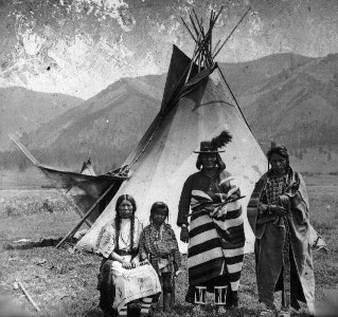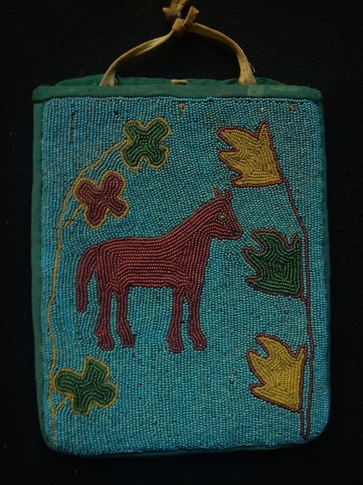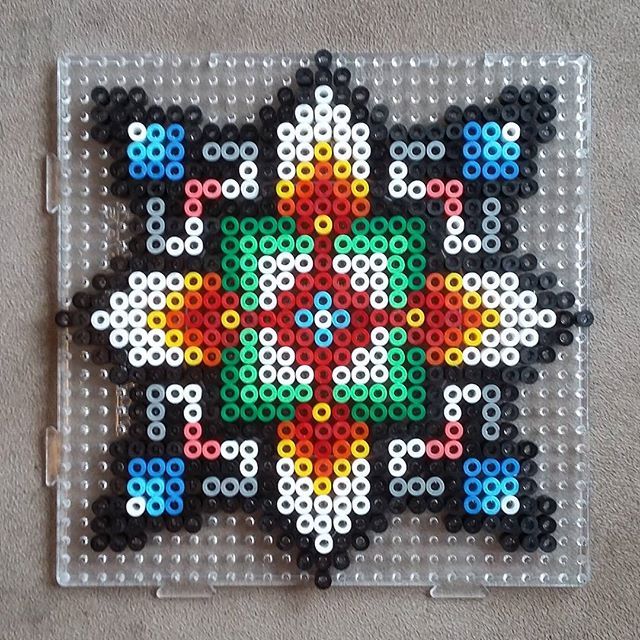Art has been created throughout time. Which means that artists have lived in different times, come from different countries, cities and cultures around the world.
Let's look at some colorful beaded art by Indigenous artists of the Pacific Northwest.
First, what does Indigenous mean?
 |  |
What does it mean to trade? 300 years ago (in the 1700's) the fur trade expanded to bring new trade goods to the Northwest region. Native people of the Great Plains brought their beadwork to the Northwest.
Seed beads (small round beads) in many colors became available, together with steel needles.
Because of these newly traded materials beadwork was now being created. Beadwork featured flower shapes, images of people, animals and landscapes. Today more contemporary designs are created.

People of the Columbia Plateau traditionally relied on salmon, roots and local animals.
What do you see that tells you scenes of hunting for food in daily life show up in their beaded work.
Historically women created the beaded work. Often girls learned to bead from an older relative or other elder. 

Beads are sewn over the surface of the bag.
The main design is beaded first and then the background is beaded around it.Beaded bags are usually made from cloth and beaded on one side only.
Remember flower designs were popular.
Which specific plants and animals do you recognize?Notice the flowers and horses. The horse was a favorite motif at the time.

Flat beaded bags are still produced today.
People make them to carry at celebrations, ceremonies and social gatherings, to give to others, to trade and sometimes to sell.
Will you work with beads in our jewelry studio?
Will you include motifs in your art that you notice in our Missouri environment? Trees, flowers, animals?
Will you create functional art that can be used by you or someone you know?
https://mnch.uoregon.edu/collections-galleries/plains-and-plateau-beadwork
|
|
|









































